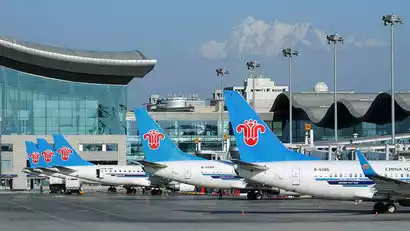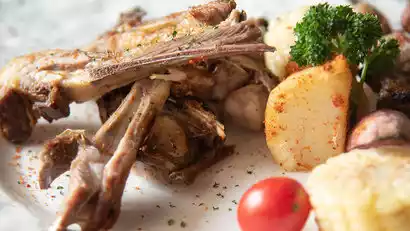Day 1 Anywhere → or → Urumqi (★All-day gathering day)
All day
Today is the gathering day for the event. All tourists will proceed to the meeting hotel in Urumqi, the capital of Xinjiang Autonomous Region. Simply provide "China-Travel Note + Name" to check in.
Located in the heart of Asia, Urumqi is world-renowned for its song and dance, fruits, gold, and jade. If you have more time, you can plan your own activities in downtown Urumqi. For those interested in learning about Xinjiang's culture and history, the Xinjiang Museum (free; closed on Mondays) is highly recommended. For an exotic experience, the Erdaoqiao International Grand Bazaar showcases unique Western culture and a dazzling array of goods—you might find some great finds.
When in Urumqi, don't miss the delicious Xinjiang cuisine: the nationally renowned Dapanji (Big Plate Chicken), crispy grilled lamb chops, grilled lamb skewers, Yili horse intestines, and various specialty noodles. In autumn, sunset typically occurs at 9:00 PM, and Urumqi remains bustling even at night. Explore the Grand Bazaar Night Market for a bite to eat.
Border Pass Description
The team will go together to apply for a border pass on D8, one per person (bring ID card, apply in person); children under 16 years old: must be accompanied by their parents (bring household registration book + ID card).


Day 2 Urumqi → Bosten Lake Crossing → Korla
All day
After breakfast, the off-road vehicle driver will arrive at the hotel on time to pick up the tourists, introduce each other and break the ice, and then head south to start a pleasant journey.
We crossed the foothills of the Tianshan Mountains and passed through the small town of [Malan]. This was once the base for China's nuclear explosions. It was a small town built by Chinese soldiers on a Gobi desert northwest of Lop Nur in 1958. We started our journey across [Bosten Lake] from here!
Bosten Lake, China's largest inland freshwater lake, is known as the "Baiyangdian of Xinjiang." Located at the southern foot of the Tianshan Mountains, on the edge of Lop Nur, every autumn, 400,000 mu (approximately 1,000 acres) of natural reeds transform into a vibrant golden hue, swaying in the wind and accompanied by flocks of birds. China-TravelNote's off-road tours offer a unique opportunity to explore the southern part of Bosten Lake, traversing the vast sand dunes along its southern shore. The desert juxtaposes the blue waters with the reed beds, offering breathtaking views and photos from diverse perspectives.
Leave at the right time and arrive at Korla Hotel in the evening to rest. In the evening, you can freely stroll along the Peacock River and taste the local specialties.


Day 3 Korla → Huludao (Water Poplar Forest) → Korla
All day
After breakfast, we set off south along the Tarim River. China-TravelNote takes an unconventional approach, traveling by off-road vehicle deep into the heart of the Tarim River, exploring the little-known Populus euphratica forests of the 33rd Regiment in Korla, on the edge of the Taklamakan Desert.
In the afternoon, we'll arrive at Huludao, a hidden gem in the desert. Here, you'll find a vast expanse of water-soaked poplar forests, perfect for aerial photography with a drone. We'll also explore the vast and boundless Taklamakan Desert. We'll depart at an opportune time and check into our hotel for the night.


Day 4 Korla → Luntai Populus euphratica Forest Park → Kuqa
·morning
After breakfast, we headed west, with the majestic Tianshan Mountains on the right and the Tarim Basin, China's largest basin, on the left.
·afternoon
Arrive at the Luntai Tarim Populus euphratica Forest Park, home to the largest virgin poplar forest in the Tarim River basin, home to over 90% of the world's poplars. Surrounded by a sea of golden trees, you'll feel like you've stepped into ancient times. We'll take a scenic bus deep into the forest, and you can also take the scenic train (at your own expense) or stroll along the train tracks, taking photos amidst the vibrant golden leaves.
After enjoying the fun, head to your hotel in Kuqa City for rest. Kuqa, formerly known as Qiuci, is a nationally renowned historical and cultural city and a key junction on the ancient Silk Road. It was home to the ancient Qiuci, one of the "Thirty-Six Kingdoms of the Western Regions." In the evening, tourists can explore this exotic town and discover the delicious cuisine of southern Xinjiang, including barbecue, mixed noodles, pepper chicken, meatball soup, and the wheel-sized Kuqa naan.


Day 5 Kuche → Kuche Grand Temple → Kuche Tianshan Grand Canyon → Red Stone Forest → Aksu
·morning
After breakfast, we will visit the Kuche Grand Mosque, which is the second largest mosque in Xinjiang, second only to the Id Kah Mosque in Kashgar. The history of the Kuche Grand Mosque can be traced back to 1561, which means it has a history of 460 years.
Afterward, we'll take a short drive along the Duku Highway to the Kuche Tianshan Grand Canyon. The mysterious Kuche Tianshan Grand Canyon, a canyon on the southern side of the Tianshan Mountains, was formed from reddish-brown rock through eons of wind and rain erosion. The canyon's winding paths lead to secluded caves and hidden gems. The mountains are a myriad of shapes, with peaks towering into the sky. Light filtering down from the canyon's summit creates a rich tapestry of light and shadow, earning it the nickname "Xinjiang Antelope Valley."
·afternoon
Head to China-TravelNote's newly discovered, hidden gem, the Red Stone Forest. Composed of reddish-brown Yardang wind-eroded landforms, the rock and soil, eroded by wind and rain over thousands of years in an arid environment, have formed a diverse array of valleys, peaks, terraces, and pillars. Within the winding gullies, large and small, layers of brown-red, yellow-green, and gray-green earthen blankets stack up, resembling a deserted historic city.
After having fun, we went to the hotel in Aksu, the Apple City, to rest.


Day 6 Aksu → Wensu Grand Canyon → Atushi
All day
After breakfast, depart for the Wensu Grand Canyon (also known as the Tomur Grand Canyon). The Wensu Grand Canyon boasts unique salt karst, Danxia, yardang, and sub-yardang landforms. It was once a crucial route on the ancient Muzhat Road, connecting the northern and southern Tianshan Mountains. The canyon's walls feature distinct rock formations, folded by compression. Millions of years of wind and rain have eroded the canyon, creating a unique landscape of towering cliffs, towering peaks, and jagged, bizarre, and vibrant colors. Enter the canyon aboard a shuttle bus, marvel at the wonders of nature, and gaze down upon the breathtaking city of mountains. On clear days, you can even see Tomur Peak, the highest peak in the Tianshan Mountains.
We arrived at Atushi, the capital of Kizilsu Autonomous Prefecture, in the evening. We first went to apply for a border pass for the border trip, and then went to the hotel to check in and rest.


Day 7 Atushi → Tianshan + Kunlun Mountains intersection → China's westernmost point → Wuqia
·morning
Today, we head west to the westernmost point of China's border!
Along the way, we passed the intersection of the Tianshan and Kunlun Mountains. To our left, the majestic Kunlun Mountains, known as the "Mother of All Mountains," lie between Xinjiang and Tibet. To our right, the sprawling Tianshan Mountains, one of the world's seven major mountain ranges, divide Xinjiang into northern and southern Xinjiang. These two mountain ranges meet in Wuqia County, offering a breathtaking view of the unique scenery of both majestic ranges.
·afternoon
Continuing westward, we saw more and more foreign license plates along the way, and finally arrived at the [Westernmost Point of China]. We climbed up along the plank road, checked in at the Westernmost Point stone tablet on the top of the mountain, and looked out at the [Irkeshtam Port] between China and Kyrgyzstan. The snow-capped mountains stretched endlessly, and we had arrived at the westernmost point of China's geography!
Leave at the right time and go to Wuqia Hotel to check in and rest.


Day 8 Wuqia → Kashgar City (free day at leisure)
·morning
After breakfast, we will head east to Kashgar. Today, we will have a full day of free time to experience the culture of Kashgar Old Town.
·afternoon
In Xinjiang, there's a saying that goes, "If you haven't been to Kashgar, you haven't really been to Xinjiang." Kashgar's city center is small, and you can generally walk or take a taxi for a reasonable price. After your visit, you can return to your hotel at your own leisure.
Game Guide:
[Old Town of Kashgar]: In the Old Town of Kashgar, you can see the daily life of the Uyghur people. The houses in the Old Town of Kashgar are scattered at different heights, and the buildings are all made of earth, wood, brick and wood. The intricate streets were once the filming location of the movie "The Kite Runner". Children playing in the alleys will be very excited to pose in various shapes for you to take pictures. You can see their simple hearts from their bright eyes.
Id Kah Mosque: (You can stroll around the square; those interested can go inside to visit, but pay for their own tickets) This is the largest mosque in China. All roads in the old city lead to this mosque. For Muslims, this is not only a place of worship, but also a home for their purified souls.
Century-Old Teahouse: For the elderly Uyghurs living near the Id Kah Mosque, visiting the old teahouse for tea is a daily ritual. In winter, they gather around the fire, in summer, spread out on a carpet in the shade. For 1.5 yuan, they can enjoy a pot of tea, a round naan, and chat with old friends.
Gaotai Residences: Gaotai Residences are a Uyghur settlement in Kashgar's old city, with a history dating back 600 years. Uyghurs have lived here for generations, building their houses against the cliffs. As a family's population grows, they add a new floor to their ancestral home. This successive layering of houses and buildings has created a network of over 50 alleys that crisscross and connect in all directions, making it easy for outsiders to get lost.
Tomb of the Fragrant Concubine: Built around 1640 AD, this 2-hectare mausoleum, a typical ancient Islamic architectural complex, serves as the burial site of a descendant of the Islamic saint. Resembling a magnificent palace, it comprises five sections: a gatehouse, a small mosque, a large mosque, a scripture hall, and the main burial chamber.
Kashgar Grand Bazaar: Also known as the East Gate Grand Bazaar, the Kashgar Grand Bazaar stands for Central and West Asia International Trade Market. It is a large international trade market in northwest my country. With a history spanning over 2,000 years, it was known in ancient times as "Asia's Greatest Bazaar."
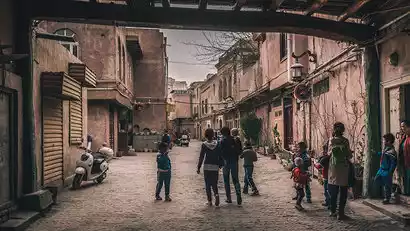
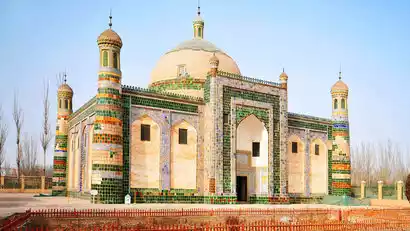
Day 9 Kashgar → Karakoram Highway → Muji Township Crater → Baisha Lake → Bulunkou Township
·morning
After breakfast, we'll depart along the Karakoram Highway (connecting Pakistan, also known as the China-Pakistan Friendship Highway) to the "Roof of the World" [Pamir Plateau]! "Pamir" means "Roof of the World" in Tajik, a must-see on the ancient Silk Road and part of the Karakoram Mountains.
·afternoon
Journey to the mysterious border village of Muji Township, home to the unique Kare Temir Volcanic Cluster, home to 13 craters formed by eruptions 1,500 years ago. The Kare Temir Volcanic Cluster boasts classic craters, rare plateau wetlands, clear glacial lakes, and sweet glacial snowwater. Its unique geological landscapes will leave you marveling at the magical charm of nature. In the distance, the "Eighteen Arhats Snow Mountain Honor Guard" stands in formation, like guardians of the mountains, protecting this secret realm deep within the plateau.
Afterwards, we passed by the Baisha Lake scenic area and enjoyed the magical landscape of the blue lake and sand dunes.
In the evening, check in to the hotel in Bulenkou Township to rest. You can go out and enjoy the wonders of the coexistence of Baisha Lake and Sand Mountain. On a clear night, you can also encounter the vast starry sky of the plateau.
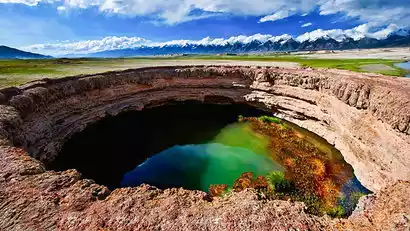
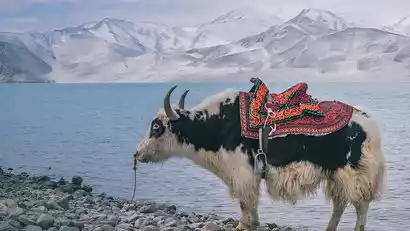
Day 10: Bulunkou Township → Karakul Lake (Muztagh Ata Peak in the Sunlight) → Taheman Wetland → Tashkurgan County → Panlong Ancient Road → Tal Township
·morning
Depart early in the morning (breakfast at your own expense) and head to Karakul Lake, where you'll await a golden sunrise, gradually illuminating the Muztagh Ata, the father of glaciers. You'll also be able to photograph the three peaks of Kunlun Mountain (7,649 meters, Kongur Peak, 7,530 meters, Kongur Jiubie Peak, and 7,509 meters) reflected in the lake.
Passing by [Taheman Wetland], we admire the wetland grasslands nurtured by the meltwater from the Muztagh Ata glacier. We specially arrange an off-road vehicle to cross the edge of the wetland. Instead of taking the conventional road, the off-road vehicle will circle the wetland 270 degrees for a panoramic view!
Arrive in Tashkurgan County at noon. This small border town is primarily populated by the Tajik people, a noble ethnic group on the Pamir Plateau who never pick up lost items on the road or lock their doors at night. You can meet up with your group to explore the plateau's unique cuisine (yak hotpot, yak beef, etc.).
·afternoon
Crossing the iconic Panlong Ancient Trail, a high-altitude highway, you'll be amazed by the sheer force of the road builders as you wind through hundreds of hairpin bends. Because the mountainous terrain on which the trail is built is composed of loose sand and rock, neither tunnels nor elevated bridges can be built. Instead, the trail was built around the mountain's slopes, creating a winding S-shaped path with over 600 bends.
Afterwards, we'll follow the famous Tasha Ancient Road, tracing Xuanzang's return journey westward into the Kunlun Mountains. We'll pass Bandir Blue Lake, where meltwater from the snowcapped mountains converges, resembling a giant blue gem embedded in the heart of the Kunlun Mountains. We'll follow the Tashkurgan River deeper into the Kunlun Mountains, passing through Tajik villages. We'll visit Alemalek Village and learn about the Tajiks, known as "China's only Caucasian people."
Stay in the Tajik township tonight and experience authentic Tajik life.
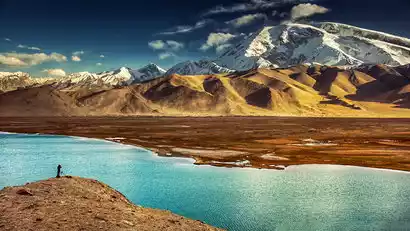
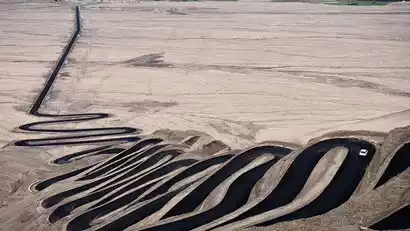
Day 11: Taer Township → Tasha Ancient Road → Shache/Kashgar
All day
After breakfast, we'll set off, continuing deeper along the Tasha Ancient Trail, stopping and walking as we zip along. The quaint villages and towering Kunlun Mountains, mingled with the simple Tajik customs, create a relaxing and enjoyable experience. The deeper we venture into the mountains, the more we'll feel the warm and friendly Tajik people. We'll chat with them and learn about their daily lives. After exiting the Kunlun Mountains, we'll arrive at our hotel in the evening for rest.
Important Notes:
The Tasha Ancient Road runs through the Karakoram Mountains. The terrain is steep and the road conditions are complicated. There are often landslides or road closures in the Tal Township-Shache section. If the road is impassable, you need to return to Kashgar by the original route.
Alternatives:
D10: Tour to Almalek Village, then return to Tashkurgan County for overnight stay. The difference in accommodation cost will be borne by China-TravelNote!
D11 Abandon the second half of the Tasha Ancient Road and return to Shache by the original route. The remaining fuel costs and driver subsidies will be covered by China-TravelNote
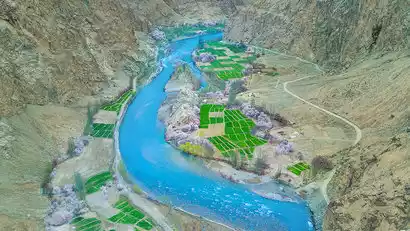
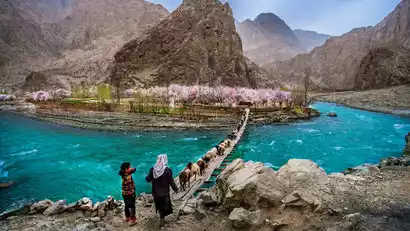
Day 12 Shache/Kashgar → Yarkand Khanate or Yarkand Khanate Mausoleum → Hotan
·morning
After days of traveling, we can take a nap today. After breakfast, we will visit the Yarkand Khan Palace, a Western Region architectural complex built on the site of the former Yarkand Palace. The exquisite brick carvings, arches, domes, symmetrical figures, regular patterns and colorful colors perfectly restore the luxury of the Islamic-style palace.
Palace Description:
As of July, the Yarkand Khanate Palace is undergoing renovations and is temporarily closed. If it remains closed by October, we will instead visit the Yarkand Khanate Mausoleum. Thank you for your understanding!
·afternoon
Hotan, a major city in southern Xinjiang. Anciently known as Khotan, Hotan was a key city on the southern route of the ancient Silk Road, located on the southern edge of the Tarim Basin and at the northern foot of the Karakoram Mountains.
After checking into the hotel, you will have free time at leisure. Foodies should not miss the Hotan Night Market, where you will be dazzled by the mountains of fiery red pomegranates, grapes as sweet as honey, the unique and fragrant charcoal-baked eggs, the unforgettable naan-pit-baked pumpkins, and the beautiful Hotan girls.
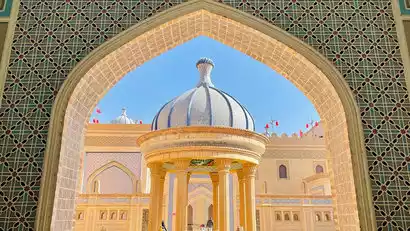
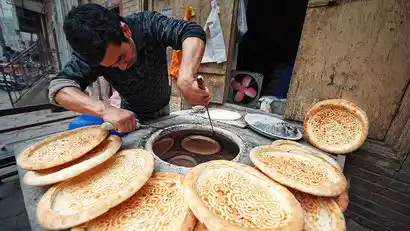
Day 13 Hotan → Taklamakan Desert Highway → Shaya County
·morning
Today, we will travel along the Taklamakan Desert Highway through the Tarim Basin, the largest inland basin in China.
After breakfast, we'll depart for China's largest desert, the Taklamakan Desert (Taklamakan, in Uyghur, means "in but no out"). We'll follow a straight desert highway that runs north-south. The scenery along the way is breathtaking, featuring vast expanses of golden poplar forests and clusters of sand dunes resembling a sea of yellow dragons, their scales gleaming in the sun.
As we walked and played along the way, the rolling sand dunes and the golden poplar trees scattered deep in the desert formed a very layered picture.
·afternoon
Cross the Tarim River, admire the autumn poplars on both sides of the Tarim River along the way, and then go to Shaya County, a small city in southern Xinjiang, to stay and rest.
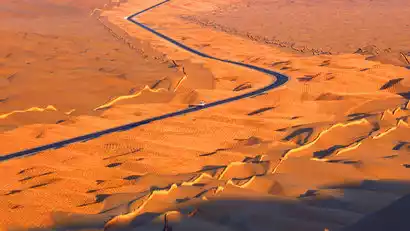
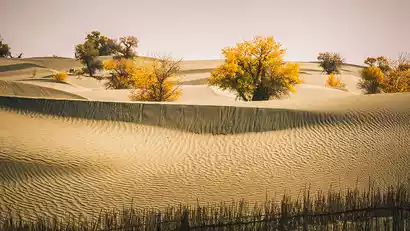
Day 14 Shaya County → Shaya Populus euphratica Forest Park → Korla
All day
After breakfast, we'll depart for the Shaya Populus euphratica Forest. While not as famous as the Luntai Populus euphratica Forest, the poplars grow near water, with crisscrossing rivers, a wider expanse of water, and fewer people and beautiful scenery. We'll traverse the 139 Populus euphratica Secret Self-Driving Highway, stopping as we go to explore the Shayanzhou Populus euphratica Forest Scenic Area.
After having fun, we left, passed through Kuche, and went to Korla Hotel to check in and rest.
Tips: It is late tonight in Korla, so it is not recommended to leave tonight.
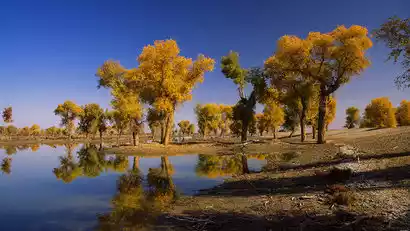
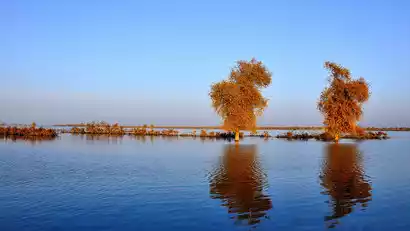
Day 15 Korla → Urumqi (★Event Ending Day)
All day
Disbandment in Korla: Leave the Korla hotel on your own according to your flight or train schedule.
Return to Urumqi with the car: You must wake up early and be transported back to Urumqi. We will then transfer you to Urumqi Diwopu Airport and then to the city center. We expect to arrive in Urumqi around 4:30 PM. Please book flights or trains after 6:30 PM.
Everyone left Xinjiang according to their flight or train schedule, ending their enjoyable trip. Everyone was reluctant to leave and kissed goodbye with tears in their eyes!
